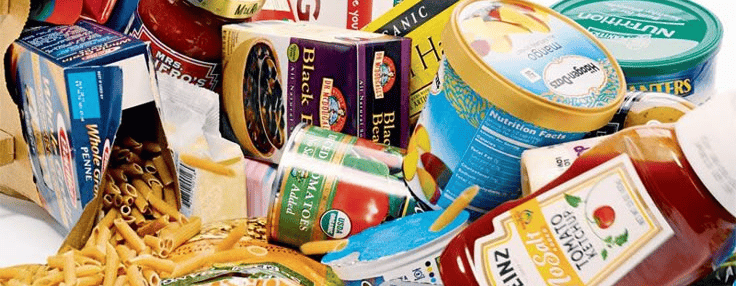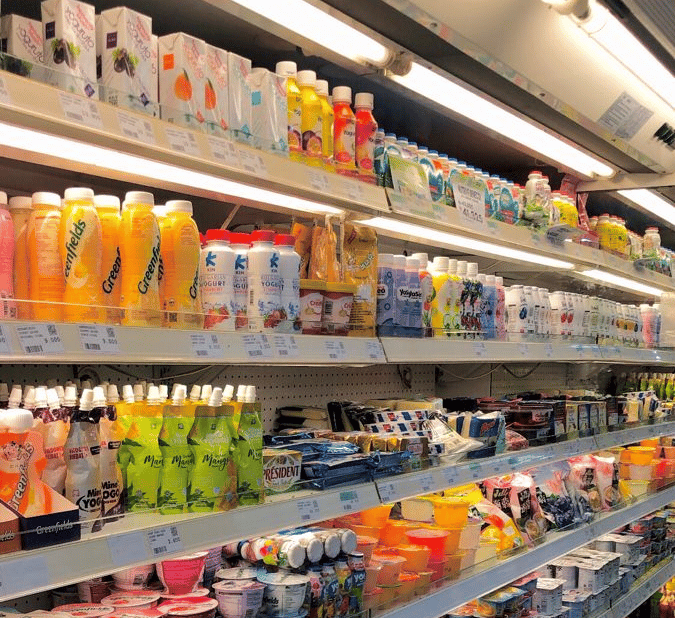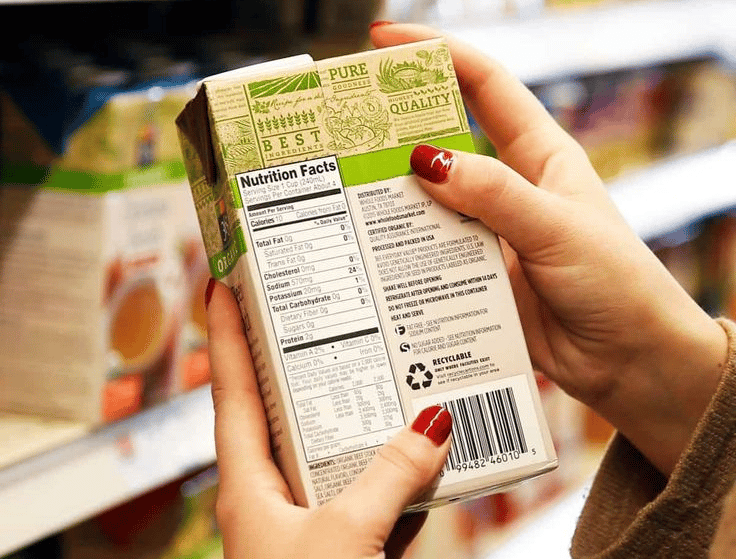
How to Read Nutrition Labels Like a Pro: Unamsking Whats Really in Your Food
Confused by food packaging? You’re not alone. This post breaks down how to read nutrition labels like a pro—exposing marketing traps, decoding ingredients, and helping you make smarter, healthier choices every time you shop. Empower yourself to know exactly what’s in your food.
Ayra Khan
6/25/2025
You know those few seconds we spend glancing at the back of a food package before tossing it into our shopping cart? That moment is more powerful than you might actually think. Because in those few seconds, you’re either buying something nourishing or falling for a clever marketing trick.
I used to think I was a “healthy” eater because I’d grab whatever had low-fat stamped on the front or proudly declared no sugar added. But the more I learned about true nutrition, the more I realized that the truth about food isn’t on the front of the packaging—it’s hidden in the small, black-and-white rectangle we often ignore: the Nutrition Facts label. So today, let’s decode what’s in your food, identify the red flags, and stop falling for marketing traps once and for all.
Step 1: Don’t Trust the Front of the Package
Let’s start with some truth: the front of a food package is an advertisement. It’s not regulated the same way the Nutrition Facts label or ingredients list is. That means brands can slap buzzwords on the front to attract you, even if the product isn't all that healthy.
⚠️ Common Marketing Traps:
“Low-fat”: Often means high in sugar or sodium to make up for lost flavor.
“Sugar-free”: May contain artificial sweeteners or sugar alcohols that can mess with your gut.
“Gluten-free”: Doesn’t automatically mean healthy. Potato chips are gluten-free too.
“No added sugar”: Can still be loaded with naturally occurring sugar (think juice concentrates).
“Light” or “Lite”: Often vague. Light in what? Color? Texture? Calories?
So before you get tricked by a “healthy” promise, turn that package around. The truth is on the back.
Step 2: Start with the Serving Size
At the very top of the Nutrition Facts label is the: Serving Size.
One bag of chips might say 150 calories per serving—but then you realize the bag has 3 servings. So if you eat the whole thing (which come on, we’ve all done), that’s 450 calories, not 150.
💡 Pro tip: Always multiply the values by the number of servings you actually plan to eat.
Step 3: Calories – A Helpful Tool, Not the Enemy
Calories tell you how much energy you’ll get from a serving of food. But remember—it’s not about eating fewer calories, it’s about eating the right ones.
Check the calorie count in context. Is it a snack or a full meal? And how nutrient-dense is it? A 300-calorie protein-packed yogurt with probiotics is not the same as a 300-calorie sugar bomb cookie.
Step 4: Fat – Friend or Foe?
Here's where it gets juicy.
Many people still think fat = bad. But not all fats are created equal.
✅ Healthy fats:
Monounsaturated & polyunsaturated fats – Found in nuts, seeds, avocado, olive oil, and fatty fish. These are great for your heart and brain.
❌ Unhealthy fats:
Trans fats – Artificial fats linked to heart disease. Avoid at all costs.
Saturated fats – Okay in small amounts, but overconsumption (especially from processed foods) can be harmful.
Watch out for: Items that claim “0g trans-fat” but still list “partially hydrogenated oil” in the ingredients. It means Trans fats are still present in small amounts.
Step 5: Sugar – The Sneakiest Ingredient of All
Sugar has over 50 different names on labels. Some of the most common include:
Sucrose
High-fructose corn syrup
Cane juice
Maltose
Dextrose
Fruit juice concentrate
🚩 Red flags:
If sugar (or any of its aliases) is listed in the first 3 ingredients—beware.
If the total added sugar is more than 10g per serving, that’s quite a bit for something labeled “healthy.”
💡 Pro tip: Check the “Added Sugars” line under “Total Sugars” on the label. That’s the sugar that was added during processing, not the sugar naturally present in fruit or dairy.
Step 6: Sodium – The Silent Saboteur
Salt isn’t just in chips and fries. It’s hidden in everything from cereals to salad dressings to canned veggies.
Too much sodium can lead to high blood pressure, bloating, and kidney issues. The daily limit recommended is 2,300 mg, but many people go way over.
Watch for products that contain:
Over 400 mg sodium per serving
Sodium listed as one of the top ingredients
Hidden sources like monosodium glutamate (MSG) or “flavor enhancers”
Step 7: The Ingredient List – Your Truth Serum
This might be the most important section of all.
The ingredients are listed in descending order by weight. That means the first few ingredients are what the product mostly consists of.
What to Look For:
Short ingredient lists – Ideally, fewer than 8-10 items.
Whole foods listed first – Like oats, chickpeas, almonds, or brown rice.
Avoid: Ingredients you can’t pronounce, artificial dyes (like Red 40), preservatives, and vague items like “flavoring” or “spices.”
Bonus: Fiber, Protein, and Vitamins – The Good Guys
These nutrients don’t get as much spotlight, but they matter a lot:
Fiber – Aim for 3g or more per serving. Great for digestion and blood sugar control.
Protein – Helps keep you full and supports muscle repair. Look for at least 5g per snack, more for meals.
Vitamins & Minerals – Look for calcium, vitamin D, potassium, and iron—nutrients many people are deficient in.
Putting It All Together: A Real-Life Example
Let’s say you’re looking at a granola bar.
The front says: “Natural! Low-fat! Only 100 Calories!”
But the back says:
Serving size: 1 bar (but it’s tiny)
Calories: 100
Total sugar: 12g (with 10g added)
Fiber: 1g
Ingredients: Corn syrup, crisped rice, sugar, natural flavor, etc.
Despite the clever label, this bar is basically a candy bar dressed up in gym clothes.
Now let’s say you find another bar with:
180 calories
5g added sugar
6g fiber
8g protein
Ingredients: Oats, almonds, honey, chia seeds
That’s the winner—more calories, sure—but real fuel for your body.
In Summary: Your Label-Reading Checklist
✅ don’t trust the front – its marketing.
✅ Check serving size and multiply if needed.
✅ Look at calories in context.
✅ Watch for added sugars and unhealthy fats.
✅ Sodium should be under control.
✅ Ingredients list: Short, clean, and real.
✅ Bonus points for protein, fiber, and key nutrients.
Final Thoughts
Reading food labels is like learning a new language. At first, it seems confusing and intimidating—but once you get the hang of it, it opens up a whole new world. You’ll stop falling for flashy claims and start nourishing your body with intention.
This isn’t about being perfect. It’s about being informed. You deserve to know what’s in your food.
Now go grab something from your pantry and read the label like a pro. 👏








Nutrition
Explore the latest in nutrition and diets.
Health
Wellness
ayra.azat@gmail.com
© 2025. All rights reserved.